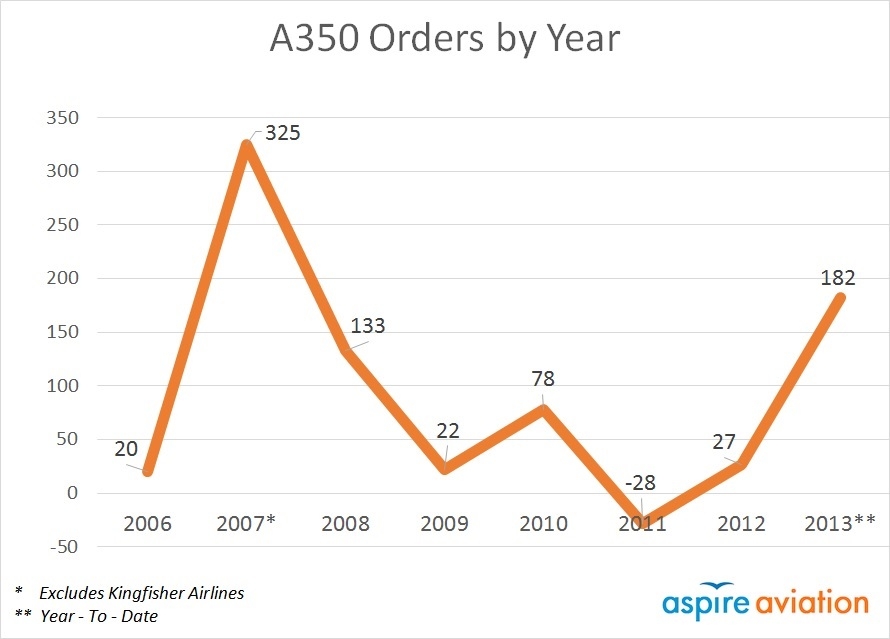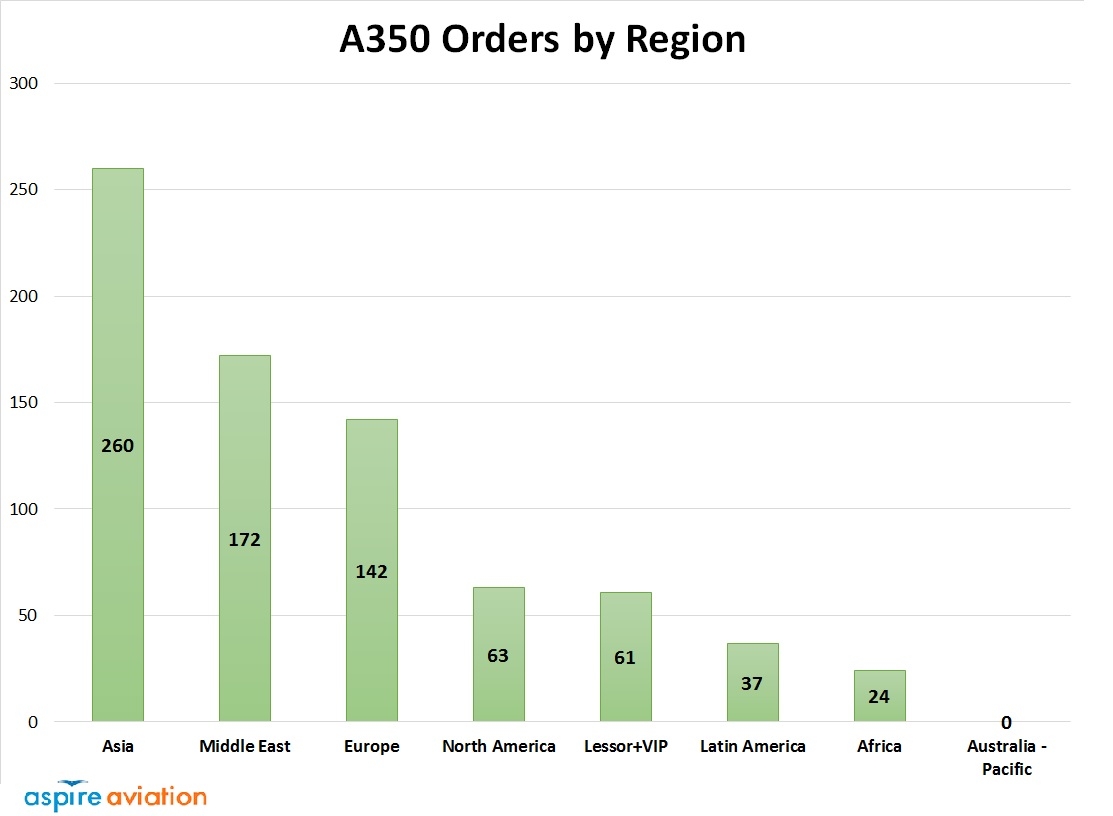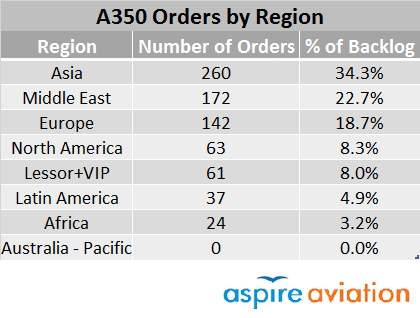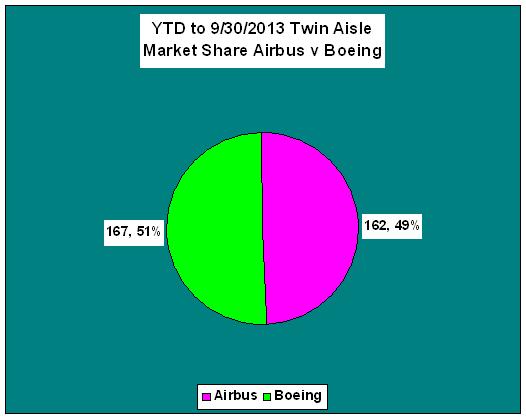Leeham News and Analysis
There's more to real news than a news release.
Chasing the 777X assembly site
Washington State is ramping up its all-out effort to land the assembly site of the Boeing 777X.
Gov. Jay Inslee appointed a bi-partisan panel from the Legislature to come up with an incentive package to present to Boeing. He’s already proposed extending the Boeing 787 tax incentives adopted in 2003 another 16 years, to 2040, though these incentives were ruled illegal by the World Trade Organization.
Predictably, Airbus pounced on Inslee’s proposal, though mistakenly assuming Boeing asked for the incentives. According to The Everett Herald, the initiative is entirely Inslee’s. Said Airbus:
This is another example of Boeing’s refusal to accept to play by the rules by continuing to solicit and receive subsidies which are especially potent in distorting trade. The 787 tax credits were ruled illegal subsidies by the WTO in the final verdict of March 2012. After breaking the WTO rules on the 787, with a repeat of measures for the 777X Boeing continues to show total disrespect for WTO obligations and the compliance process.
These are the quotes from the reports on
adverse effects:
– The WTO Panel found that “the availability of … the B&O tax subsidies, enabled Boeing to lower its prices beyond the level that would otherwise have been economically justifiable” (7.1818) giving Boeing a “pervasive and consistent pricing advantage” (7.1819) that is “felt most acutely in particular sales campaigns of strategic importance” (7.1822) and results in illegal adverse effects to EU LCA interests (7.1823)
– The WTO Appellate Body generally upheld that finding (para. 1273), emphasizing the importance of the subsidy given the price-sensitive nature of many sales, and Boeing’s market power in a duopoly context (para. 1260)
The analysis of the B&O tax rate reduction “subsidies” do not provide any great quotable statements by the Panel, which isn’t surprising given that the dollar value of those subsidies was quite low during the period of review, when the subsidy programs were just starting to take effect. The numbers now are much larger!!
The quote on the subsidy side is in 7.302 of the panel report:
“For the foregoing reasons, the Panel finds that the Washington B&O tax reduction; the B&O tax credits for preproduction development, for computer software and hardware and for property taxes; and the sales and use tax exemption for computer hardware, peripherals and software are specific subsidies to Boeing within the meaning of Articles 1 and 2 of the SCM Agreement. The Panel estimates that the amounts of the subsidies to Boeing’s LCA division are $13.8 million; $21.3 million; $20 million; $1.1 million; and $8.3 million respectively”
Inslee’s office said that the WTO ruling is under appeal and until that’s settled, the tax breaks are legal.
Washington has been often criticized, including by its own politicians, as having a worse tax structure than competing states. But Washington has the sixth best tax climate in the country, according to the Tax Foundation. A low number on the map is good.
Airbus sequence shift of A350s coming, reports customer. Airbus says ‘no’
Airbus will likely shift the sequence of the entry-into-service of the A350, a customer tells us. Other sources report the same, with another customer calling the prospect of a shift “inevitable.”
A tantalizing clue may have come from Airbus CEO Fabrice Bregier. In Airbus’ own video of Bregier talking about his first ride on the A350, he remarks at 3:10 into the video that the next effort is for “the development of the next member of the family, the -1000.” The subtitles alter this to the next “challenge,” but Bregier’s words can clearly be heard. The Youtube post is below, which is the same as the video on the Airbus website.
[youtube=http://www.youtube.com/watch?v=J6yX-1ESX88&w=420&h=315]
Right now, only one A350-800 is scheduled for delivery in September 2016 (to lessor ILFC), according to one data base, with several more following in 2017–when the more popular A350-1000 is scheduled to enter service.
But Airbus’ media relations department says no re-sequence has been made.
“No change in sequence A350-900 EIS H2 2014, A350-800 EIS mid-2016 and A350-1000 mid-2017,” says a spokesperson.
“The video you refer to was intended first and foremost for internal audiences, and Fabrice was referring to the development effort for the -1000 being the next priority as the -800 is a shrink so less effort than the -1000.”
The -800 is a straight-forward derivative of the -900, with several frames removed from the fuselage. The -1000 has some changes to the wing and a slightly different engine fan diameter than the baseline -900.
Analyzing A350 backlog: special to Leeham News and Comment
Special to Leeham News and Comment:
Vinay Bhaskara of Aspire Aviation has provided the following analysis of the A350 XWB sales, on a variety of metrics, exclusively to us.
Analyzing the A350 Backlog
With the recent order for 31 A350s from Japan Airlines, we thought it would be instructive to take a look at the A350’s backlog. To date, the A350 has won 759 orders from 39 different customers (we are excluding Kingfisher Airlines in India and its order for five A350-800s – Kingfisher has been shut down for more than a year now, and it’s chances of re-starting appear bleak).
After slow sales in 2011 and 2012, 2013 has been an excellent rebound year for the A350, its second best behind 2007, with 182 orders to date. We expect South African Airways to place its delayed order for the A350s by the end of the year, and there are several upcoming fleet replacement decisions, most notably at ANA and Qantas, in which the A350 is a major player. The chart below shows A350 orders by year since it launched:
Digging further into the backlog, the following two charts discuss the geographic breakdown of the A350’s orders. Asia and the Middle East currently account for more than 55% of the program’s orders, and it has made limited inroads in the Americas relative to the 787.
.
Odds and Ends: ANA to be battle royale; Boeing’s top salesman; Delta and the A380
All Nippon Airways Wide-Body Battle: Having lost a bombshell order to Airbus at Japan Airlines, the focus in Japan now turns to ANA, reports Reuters. Will Boeing shift work from Japan? Reuters has this story.
Boeing’s Top Salesman: Jon Ostrower has a very interesting and candid story about Boeing’s top airplane salesman, John Wojick, and the 787 program. Via Google News in a new Wall Street Journal format, it looks like it’s not behind the paywall.
Delta and the A380: Delta Air Lines flies the Boeing 747-400 but it doesn’t look like it will fly the Airbus A380. See this story by Motley Fool.
Backstory on the JAL deal from Bloomberg; ‘Boeing blew JAL, others’ says Aboulafia
Japan Airlines deal: Two items of note came across our desk concerning the Japan Airlines’ order from Airbus for the A350-900/1000. The first is from Bloomberg, which has an interview with Airbus CEO Fabrice Bregier. Lots of speculation exists that JAL ordered the A350 because of the problems with the Boeing 787. While this may have played a role at some level, Bloomberg reports that Bregier began his efforts prior to the JAL 787 fire in January.
The other is the October newsletter from Richard Aboulafia of The Teal Group that takes Boeing to task for essentially blowing the opportunity to retain JAL’s business for the 787-10 and/or the 777X. At this writing, Aboulafia hasn’t uploaded his newsletter to his website (so keep checking). In a nutshell, Aboulafia raps Boeing management for dithering on both airplanes. Had Boeing authorized the 777X six months ago, Aboulafia writes, Boeing could have kept IAG (British Airways) and if launched in 2012, Cathay Pacific could have been kept.
Aboulafia also predicts JAL’s rival, ANA, will buy the A350. Otherwise it will be at a competitive disadvantage, he writes. The newsletter is quite harsh.
Latest twin-aisle orders shift market share; Plus Odds and Ends
The flurry of orders in September and this month from Lufthansa Airlines and Japan Air Lines tightens the wide body race between Airbus and Boeing.
Airbus and JAL on Monday announced a firm order for 31 A350s and options for 25 more. Last month, Lufthansa announced a firm order for 34 777-9Xs and 25 A350-900s.
Airbus traditionally has significantly trailed Boeing in the twin-aisle sector, but so far this year the race is running about even through September. The Lufthansa orders for the Boeing 777-9X and the Airbus A350-900, announced in September, are not reflected yet, nor is the Japan Air Lines order for A350-900s and -1000s. None of these orders has been booked yet by either OEM. Airbus would take the lead.
Airbus breakthrough: Japan Airlines orders 31 firm+25 option A350-900s/1000s
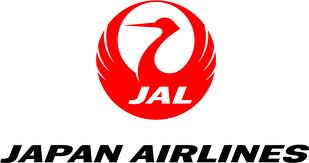 Airbus scored a big breakthrough October 7 (Tokyo time) when Japan Airlines announced an order for 18 A350-900s, 13 -1000s and options for 25 more.
Airbus scored a big breakthrough October 7 (Tokyo time) when Japan Airlines announced an order for 18 A350-900s, 13 -1000s and options for 25 more.
This is a huge win for Airbus and a big blow to Boeing’s decades-long wide-body monopoly in Japan.
*******************************************************************
Update, 06:15 am PDT: Here are a couple of stories about the order.
Reuters: Airbus clinches landmark deal.
CNBC: Deal shows loyalty fading fast
Reuters: Airbus sees JAL deal spurring R&D in Japan
AP via Seattle Times: JAL says deal unrelated to 787 woes
Reuters, 0800 PDT: 787 woes did contribute to JAL Airbus purchase, says Boeing exec
********************************************************************
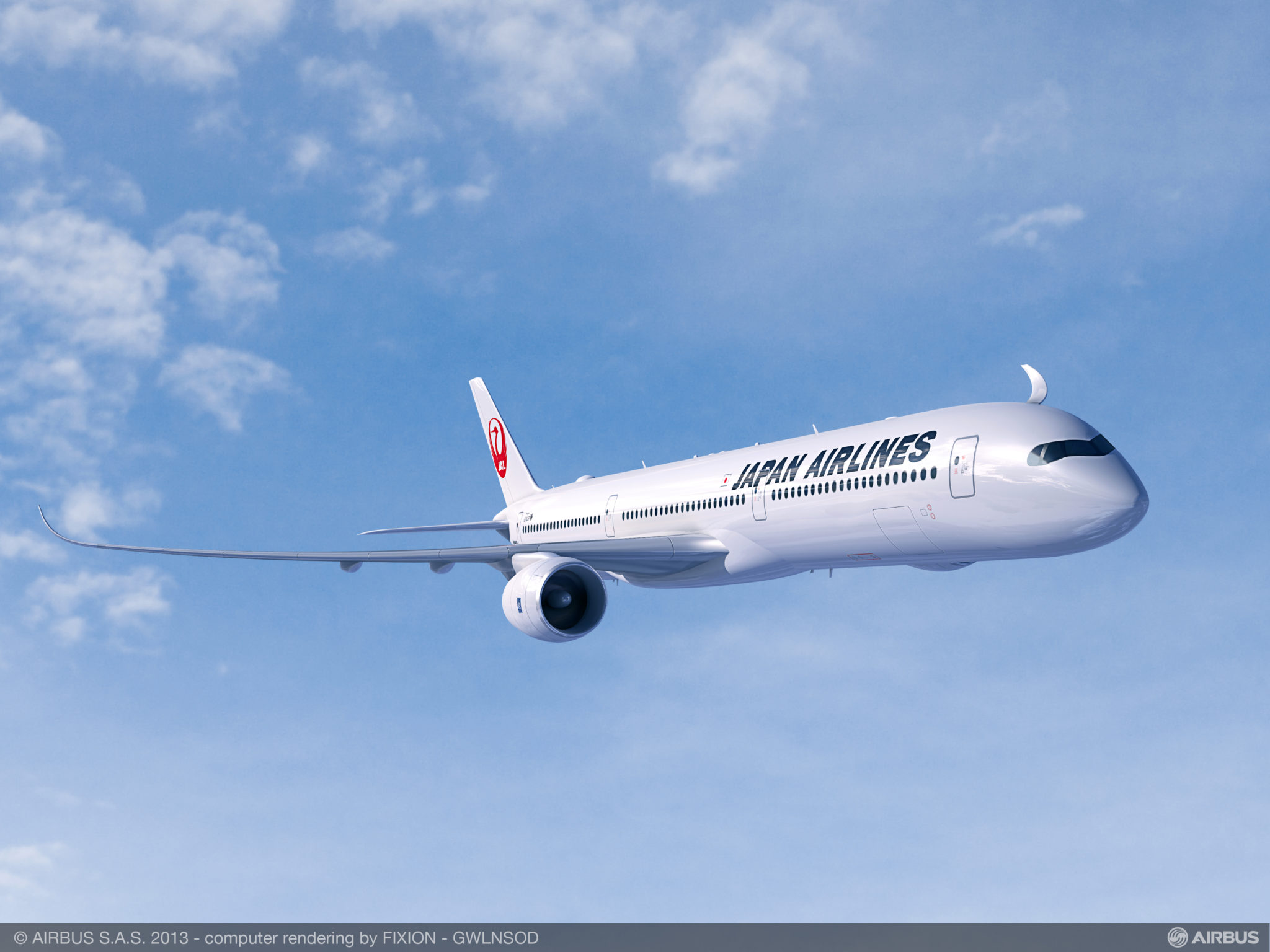 JAL, and its rival, All Nippon Airways, had been reported nearly a year ago giving serious thought to ordering the A350 as a way to diversify its reliance on The Boeing Co., long the exclusive supplier for wide-body aircraft at the two carriers.
JAL, and its rival, All Nippon Airways, had been reported nearly a year ago giving serious thought to ordering the A350 as a way to diversify its reliance on The Boeing Co., long the exclusive supplier for wide-body aircraft at the two carriers.
The lengthy delays for the 787, followed by the 3 1/2 month grounding earlier this year, are widely believed to be behind the consideration to buy the A350. John Leahy, COO-Customers, told us in advance of the Paris Air Show that he did not expect orders to be announced at the international event (and they weren’t) but he hoped to conclude something before the end of the year.
Boeing has a deep relationship with Japan and its international carriers. Japan provided around US$2bn in financing to the so-called Japanese Heavies to help fund their participation in the 787. It was suggested, but never confirmed, that Boeing might build the 777X wings in Japan to snare orders and keep Airbus from winning an A350 deal.
Relationships mean everything in Japan, and the strong one between Boeing, the government and the airlines combined to make Airbus a miniscule player there. Fear of offending the Japanese is why Airbus and the European Union didn’t include the government’s funding of the Heavies for the 787 in the bitter international trade dispute between the EU and the United States.
Airline Passenger Experience: PEDs, in-flight entertainment, expanding services
Stowage and Retention of PEDs: The US government shutdown will delay rules from the Federal Aviation Administration on the trend toward allowing gate-to-gate use of Personal Entertainment Devices, or PEDs. A special FAA committee sent its recommendations to the FAA on Sept. 30, the day before government operations ground to a halt for non-essential services due to the budget impasse in Congress.
The possibility of allowing expansion of the use of PEDs came up at the Aircraft Interiors Expo-US organized by Reed Exhibitions (Flight Global). We attended on behalf of APEX, the Airline Passenger Experience magazine, and filed several stories with APEX.
Here is one on the PED issue, and the factors that must be considered for the stowage and, more importantly, retention of PEDs. What’s the difference? Stowage is just that. Retention is keeping the PED where it is stowed in the event of an emergency (aka, crash) so the PEDs don’t become flying objects.
Embedded IFE or Bring Your Own? With the proliferation of Bring Your Own Devices (BYOD), the question arises: how long will airlines continue to embed in-flight entertainment systems, and how long with OEMs provide them?
This was one of the questions raised at the Aircraft Interiors Expo in Seattle this week. Here is a story on the subject we did for APEX magazine. Don’t look for embedded IFE to disappear any time soon, and not for reasons you would think.
Expanding passenger experience: Airlines are trying to alter the in-cabin passenger experience (not always for the better, in our view, but we digress). It’s not that easy, given regulations, different vendors and more. Industry experts answered questions about the challenges of integrating in-flight entertainment systems into aircraft. The event was the Aircraft Interiors Expo-US by Reed Publishing. We recorded a couple of short segments that give the flavor of the challenges.
http://www.youtube.com/watch?v=Kv0tvZCX6Aw
L to R: Jose Pavida, VP Engineering, TIMCO; Zuzana Hrnkova, Head of Aircraft Interiors Marketing, Airbus; Alan Wan, Product Manager, Thales; Sage Secimis, Electrical Engineering Manager, Northwest Aerospace Technologies.
http://www.youtube.com/watch?v=ItpYCdmwyb4
Recordings by Scott Hamilton


